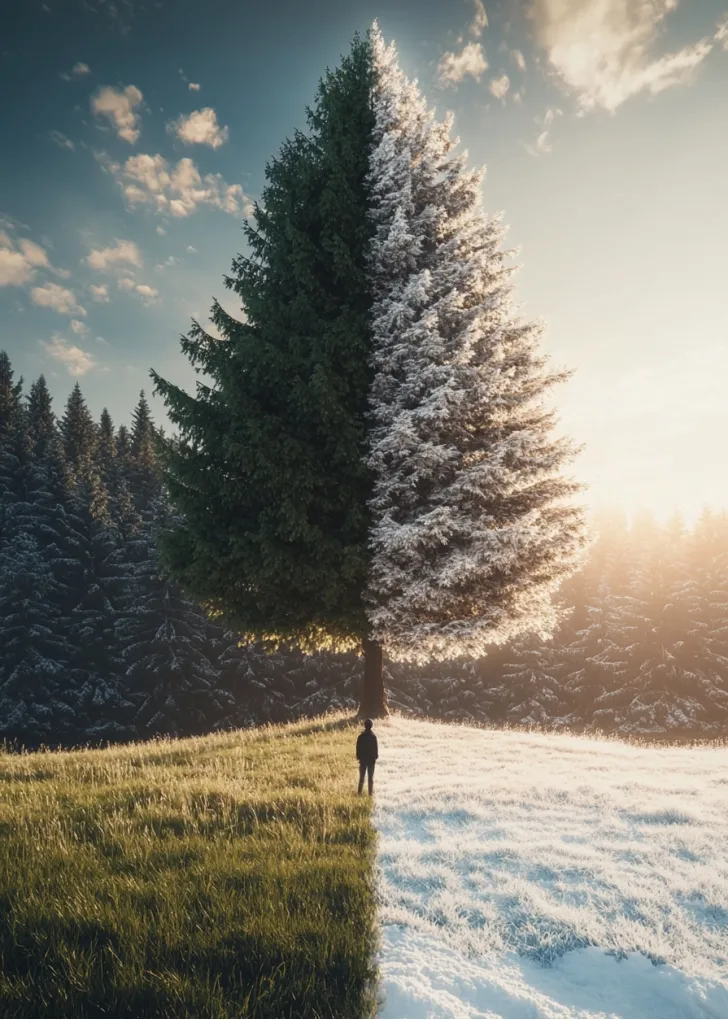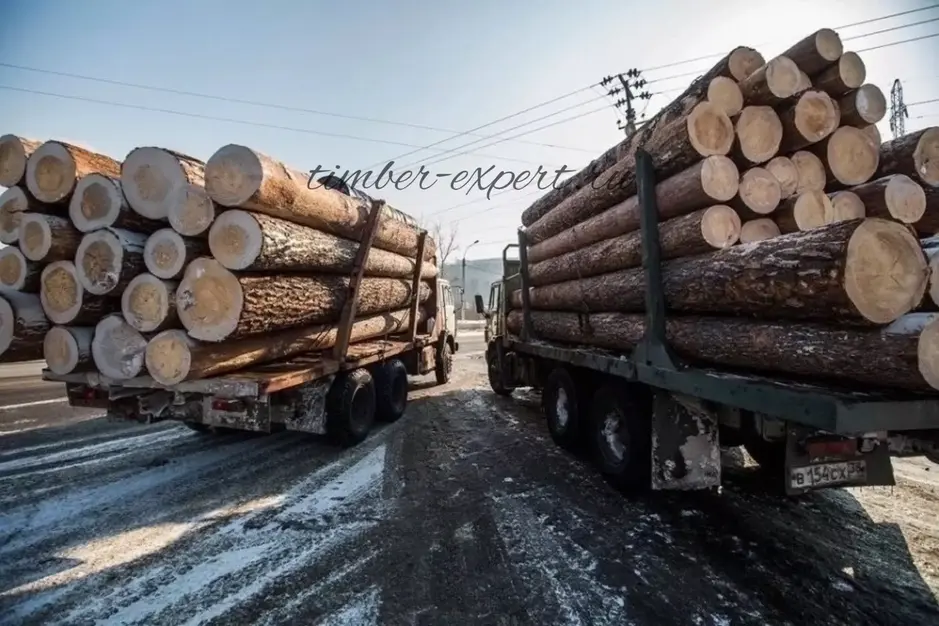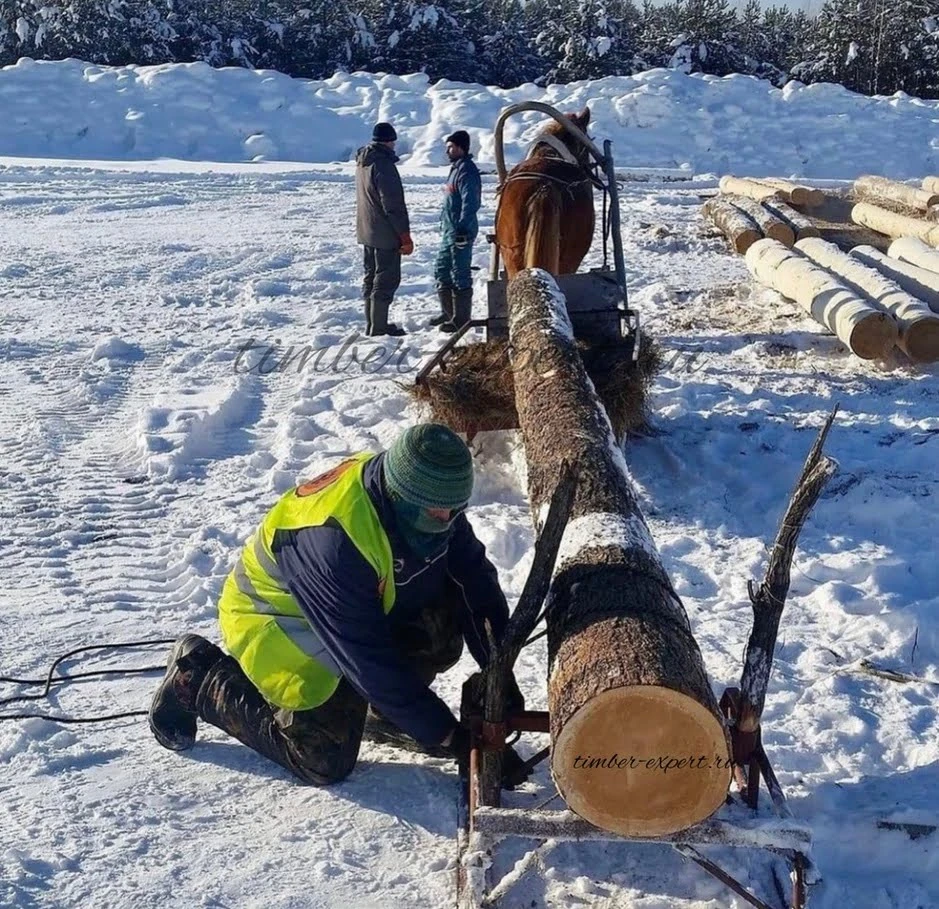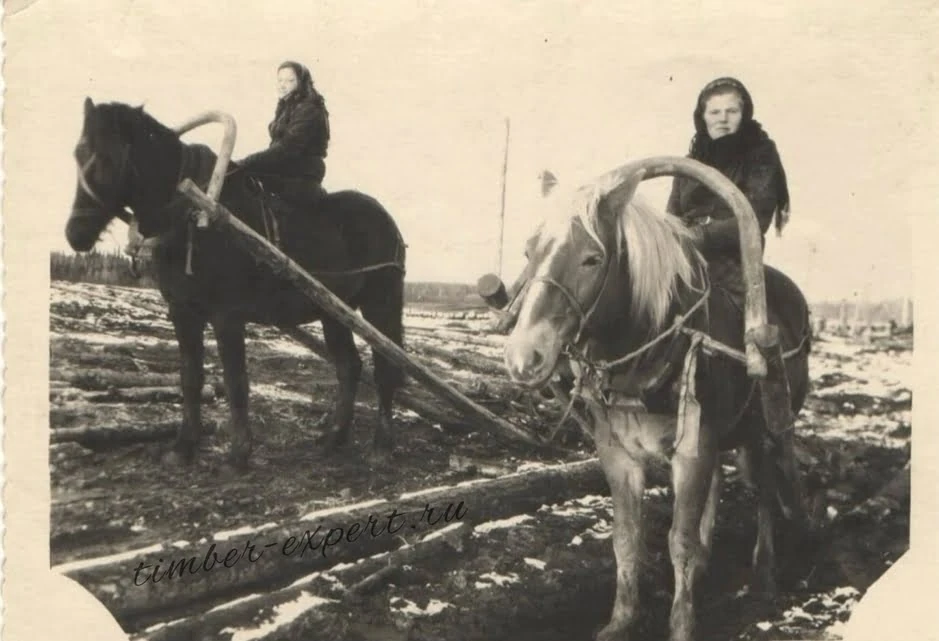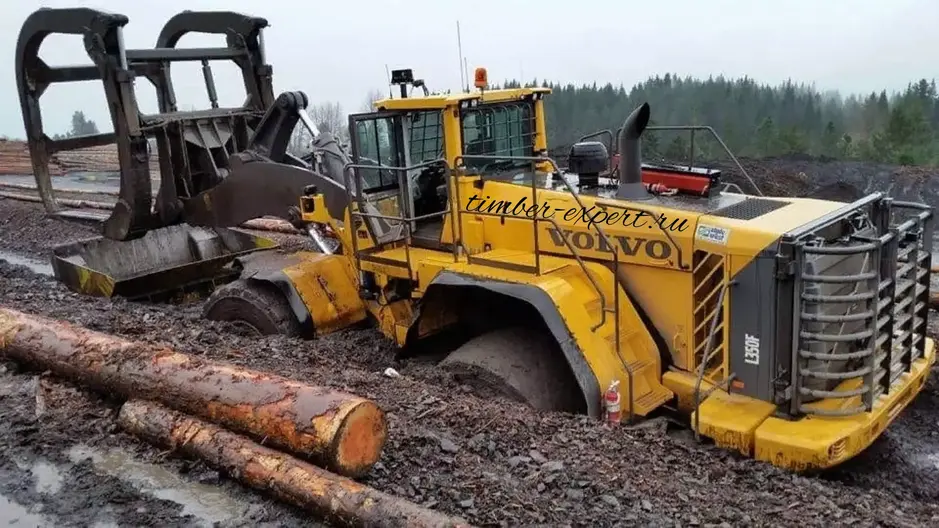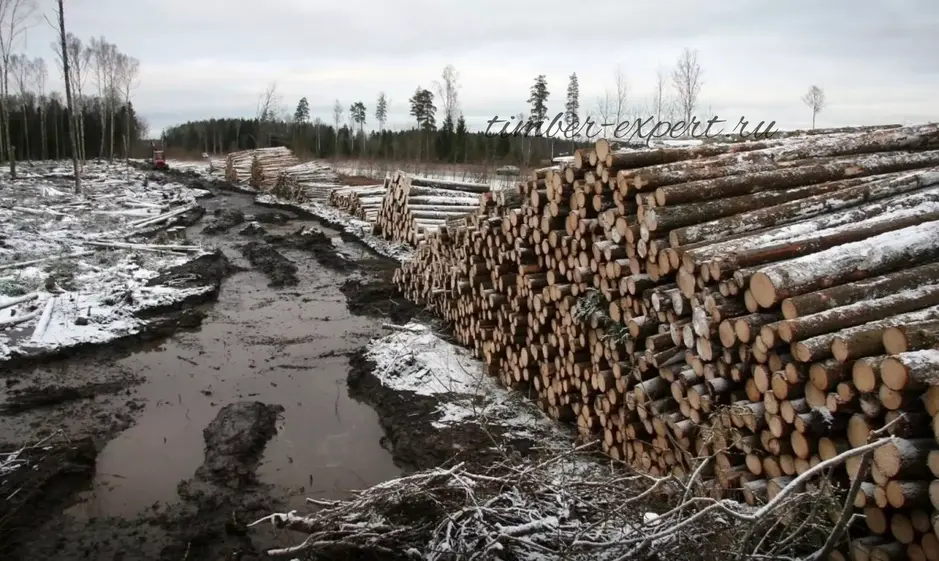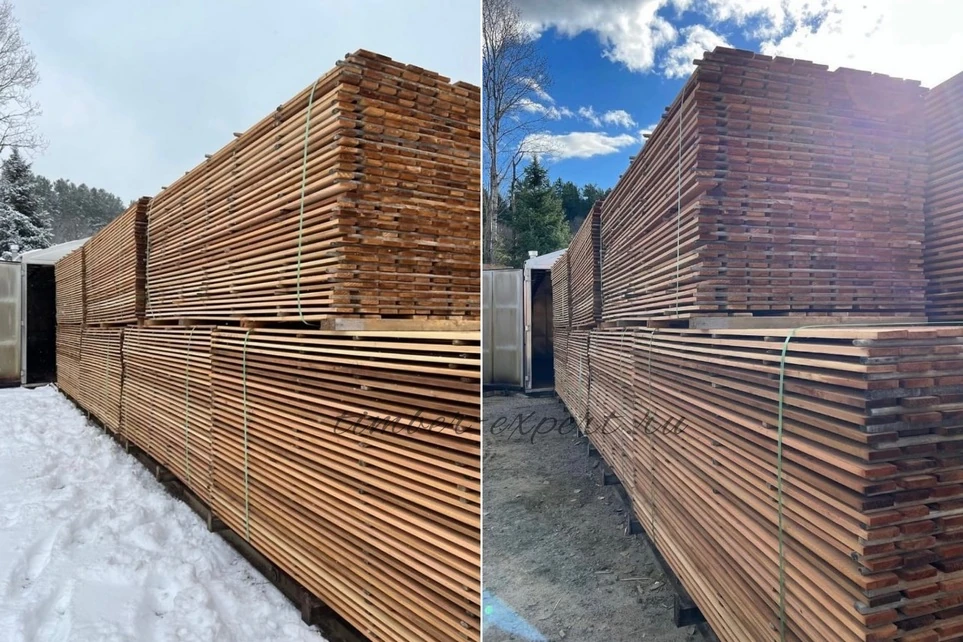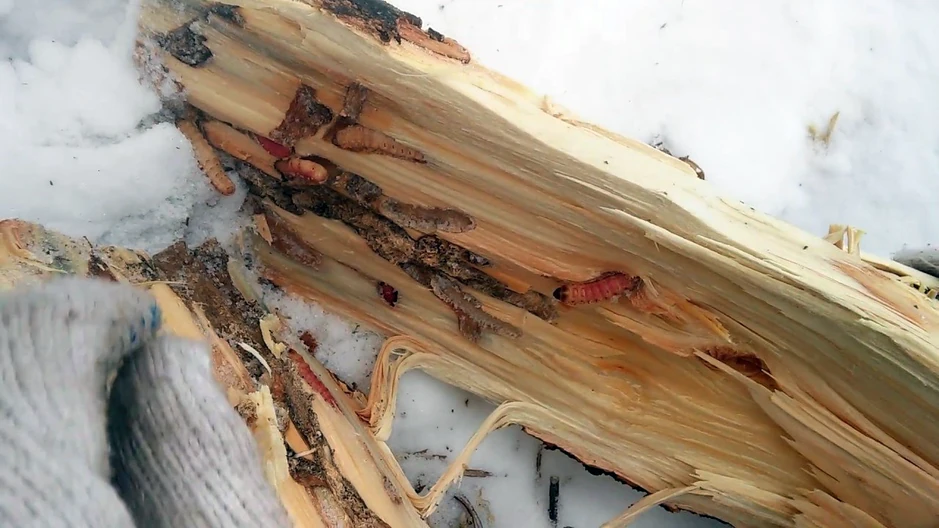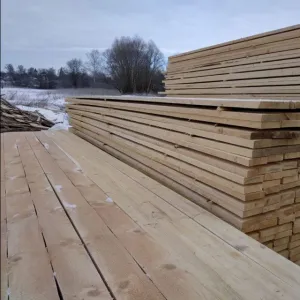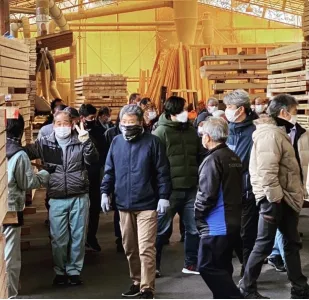Exploring the myths and realities of Russian winter lumber.
Many of you dear readers import timber from Russia, a land renowned for its vast forests. As you navigate the markets, you're likely to encounter enchanting tales spun by marketers and sellers about "winter wood" - narratives designed to entice you into purchasing lumber out of season, particularly in winter. But what's marketing fluff, and what's scientifically sound? Let's delve into the world of winter wood, separating the wheat from the chaff using the rigorous lens of science.
In the heart of the chilliest season, as snow blankets the vast forests of the north, a unique narrative unfolds - the story of winter wood. Our journey today takes us through a thicket of common claims about the "winter lumber." Combining scientific rigor with a dose of humor, we aim to give you a clear and accurate understanding of each of these claims, allowing you to distinguish fact from fiction in this complex and multifaceted topic.
Here are the most popular opinions on why winter lumber is considered better:
- better because lumber is dry;
- better because lumber is denser;
- northern lumber and its density and cost;
- contains less resin;
- who invented and how the myth of winter lumber came about and why;
- stores better and lasts longer;
- how to distinguish winter lumber from summer, fall, or spring lumber;
- winter lumber is less susceptible to bark beetles and other pests.
As we delve deeper into each of these points in future discussions, bringing to light the scientific truths and debunking the myths surrounding the enigmatic winter wood. Join us on this intriguing journey to uncover the realities hidden beneath the frosty bark!
The myth of dryness: debunked.
"The winter forest is better because it is drier!" - such a statement is often pronounced with confidence by various enthusiasts and even some specialists. But to understand the real situation, we must turn to scientific evidence. What does science actually tell us about the moisture content in wood?
Firstly, the romanticized idea that trees "shed their moisture before winter to avoid being torn apart by frost from the inside" is closer to folklore than factual evidence. Indeed, wood undergoes natural seasonal changes, but the claims of significant reductions in moisture content during winter are often overstated.
B.N. Ugolev, in his seminal work "Wood Science and Forestry Commodity Science", highlights that the lowest moisture content in wood is typically observed during the summer months - in July and August. This period is when the wood is at its driest state. Conversely, during winter, the moisture content of wood can be quite high as trees gain moisture before going into a sort of hibernation, contrary to popular belief.
Additionally, it's important to note that the moisture content of wood varies not only with the seasons but also throughout the day. This variation is due to several factors, including changes in temperature and humidity.
Thus, humorously, one might conclude that "the best forest is the one cut down at noon on Ivan Kupala," reflecting the day's peak dryness.
Understanding daily changes in wood humidity.
Delving deeper into the science of wood, it's fascinating to consider the daily changes in humidity. Wood moisture content isn't a static measurement but rather fluctuates throughout the day under the influence of various environmental factors.
During the day, particularly when the sun is out and temperatures are higher, the moisture content in wood may decrease due to the evaporation of moisture from the wood's surface and its internal layers. For instance, the morning dew that settles on trees overnight can evaporate with the rising morning sun, affecting the overall moisture content.
Conversely, in the evening, as temperatures begin to drop and the sun's activity wanes, the trunk's moisture content can increase. This increase is due to the condensation of moisture in the air and its subsequent settlement on trees and within their pores. These changes are particularly pronounced in areas with variable climates, where temperature changes throughout the day can be substantial.
Years of research and testing on wood moisture content across various regions and tree species, both within Russia and by international scientists, have confirmed and clearly demonstrated these facts.
The importance for wood industry professionals. For anyone working with wood, understanding these nuances is crucial. The scientific facts clearly show that winter wood for the end consumer is no better than wood harvested in other seasons. Therefore, before adhering to the trend of "winter wood," it is advisable to consult scientific data and make an informed decision based on facts, not myths and marketing narratives.
Additional scientific insights on wood moisture content. Humidity plays a pivotal role in determining the quality and suitability of wood for various uses. In the case of conifers such as pine and spruce, an interesting characteristic is noted: the moisture content of the sapwood (the outer layer of the trunk) is 3-4 times higher than that of the heartwood and mature wood. For instance, in the Leningrad region, the average annual moisture content of pine sapwood was found to be 112%, and that of spruce 122%, while the moisture content of heartwood and mature wood was significantly lower at 33% and 38%, respectively.
In deciduous species, both heartwood (like oak and ash) and non-heartwood types (such as birch, aspen, and linden) show a more uniform distribution of moisture across the trunk's cross-section. However, in some species of deciduous trees, the moisture content of heartwood can reach 70-80% or more, significantly higher than in conifers.
An intriguing observation is that the moisture content of sapwood in coniferous trees increases from the base to the top of the trunk, while the moisture content of the core remains almost constant. Deciduous trees exhibit their own unique patterns: for example, the moisture content of the core in hardwood trees decreases up the trunk, while in non-heartwood trees, it increases.
During winter, especially in the Leningrad region, the maximum moisture content in growing trees is observed. Conversely, in summer, the moisture content of sapwood can be 25-50% lower than in winter, attributed to seasonal fluctuations and temperature changes affecting the tree's water balance. Diurnal variations also play a significant role: for instance, the morning moisture content of spruce sapwood can be as high as 186%, decreasing to 132% by noon and then increasing again in the evening.
It's crucial to recognize that wood contains two forms of water: bound and free. Bound water, contained within cell walls, is held by physical and chemical bonds and is challenging to remove. Free water, located in cell cavities and intercellular spaces, is relatively easier to remove and has a lesser impact on wood properties.
Understanding these characteristics is vital for the forestry industry, logging, and further processing of wood to determine its quality, durability, and suitability for various applications.
The myth of density.
The idea that winter wood is denser and therefore inherently better is widespread, yet it doesn't hold up under scientific scrutiny. Density in wood is a crucial factor affecting many of its properties, including strength, thermal insulation, and acoustics. However, the season in which a tree is felled doesn't significantly affect its density.
What influences wood density?
- Type of wood: Each species has its inherent density. For instance, oak is generally denser than pine, and pine denser than spruce.
- Growing conditions: The climate, soil quality, and availability of water and light all play a part in how a tree grows, thus affecting the wood's density.
- Age of the tree: Generally, older trees have denser wood. As trees age, their heartwood typically becomes denser.
- Sapwood and heartwood: The younger, outer layers of wood known as sapwood are less dense compared to the older, inner heartwood.
- Vertical density distribution: Scientifically, it's established that the density of wood varies along the height of the tree trunk. The base of the trunk, which bears the most stress, tends to be denser, providing stability. As you move up the trunk, the density generally decreases, accommodating the need for flexibility against elements like wind.
Northern forest and it's density.
It's often said that the forest in northern regions is denser, a belief stemming from the understanding that trees in harsher climates grow slower, potentially leading to increased density. However, it's essential to differentiate between "northern" and "winter" wood. The density of wood is the result of the tree's growth over many years, not the conditions during which it was harvested.
The cost of northern wood.
There's a misconception that lumber from the north is inherently cheaper. However, this doesn't consider the whole picture. The final cost of timber is influenced by various factors, including:
- Transport costs and working conditions: Lumber from remote northern areas may incur higher transportation costs, affecting the final price.
- Equipment and work quality: The quality of wood processing is dependent on the maintenance of equipment and the skill of workers. In harsh climates, maintaining equipment and ensuring high-quality work can be more challenging and costly.
- Overall expenses: Even if the raw material might be slightly cheaper at the source, the total costs, including transportation, equipment maintenance, and quality assurance, can significantly increase the final price of northern timber.
Therefore, while the myth of density is intriguing, it oversimplifies the complex factors that influence the quality and characteristics of wood. Understanding these nuances is crucial for anyone working with wood, allowing for informed decisions based on science rather than popular misconceptions. As we continue to explore and understand these factors, it becomes clear that the properties of wood are a culmination of its species, age, growth conditions, and many other aspects, rather than merely the season of harvest.
The resin myth: a closer look.
The myth posits that winter wood contains less resin, but in reality, the resin content in a tree is influenced by its species, age, and growing conditions rather than the season of harvest. While air temperature does not affect the overall amount of resin in wood, it does impact its viscosity and mobility. In colder temperatures, resin becomes thicker and less fluid, which might make it seem less prevalent or easier to handle during winter months, but it doesn't actually reduce the total resin content.
Understanding resin pockets in softwoods.
Resin pockets are a characteristic feature of coniferous trees, particularly prevalent in species like pine and larch. These pockets are areas within the wood where resin accumulates, forming as a result of the tree's growth or in response to external factors like injury or disease. The formation of these pockets is a natural occurrence and not dependent on the season when the wood is harvested.
When wood is sawn or processed, especially in the colder months, the resin pockets may seem less apparent due to the increased viscosity of the resin. However, this doesn't mean the resin isn't there. In finished wood products such as paneling or decorative items, these resin pockets can become problematic if exposed to heat or sunlight. Under such conditions, the resin can melt and seep out, creating sticky spots on the surface of the wood - a phenomenon that can occur regardless of the wood being winter harvested or not.
The impact of temperature on resin.
While the total resin content remains fairly consistent, temperature plays a significant role in the state of the resin. In winter, the lower temperatures make the resin more viscous and less likely to flow. This characteristic can be misleading, leading some to believe that there's less resin in winter wood. However, it's not the quantity that changes with the season; it's the physical state due to temperature variations.
In summary, the notion that winter-harvested wood has less resin is not supported by scientific evidence. The presence and behavior of resin are dictated more by the tree's type, age, and the conditions under which it grew, rather than the season in which it was cut. For those working with wood, understanding how resin behaves and how resin pockets form is crucial for predicting the wood's behavior under different conditions and ensuring its appropriate processing and usage. This knowledge allows for a more efficient and conscious utilization of wood, debunking myths and emphasizing facts in the world of woodworking.
Let's unravel the origins of the winter forest myth, a tale as old as the trees themselves. Who is "to blame" for this enduring legend? It seems the roots of this misconception may lie with builders and wood traders, especially when the construction season slows down in winter. To maintain demand for wood during these slower months, promoting the idea of winter wood's special qualities became advantageous. Thus, the winter forest became not only a symbol of beauty and resilience but also a convenient marketing tool.
Harvesting wood in winter: a practical tradition.
Historically, the main period for harvesting wood was in winter, and this was due to practical reasons rather than any mythical qualities of the wood. Imagine trying to harvest wood in summer, confronted with swamps and impenetrable taiga thickets! The logistical challenges were formidable.
From sleds to harvesters: the evolution of logging.
Centuries ago, horses pulling sleighs laden with logs would have found it nearly impossible to navigate summer swamps. In contrast, winter provided a solid, snow-covered landscape, making transportation significantly more manageable. This method of winter logging was not just about tradition; it was about the practicality of moving heavy logs across the landscape.
Even today, with powerful timber carriers, harvesters, forwarders, and skidders, winter remains an ideal time for harvesting and transporting wood. The "hauling distance" encompasses not just the physical distance but also the conditions, which in seasons other than winter can pose significant challenges.
Russia: a land of deep Taiga and swampy Karelia.
In Russia, known for its vast and rich forest resources, the harvesting of high-quality wood often occurs far from main roads, deep in the taiga, or in the swampy forests of Karelia. These areas are gold mines of valuable timber but are also incredibly challenging to access. Winter transforms these nearly impassable regions into more accessible work sites.
The ground hardens, swamps freeze over, and snow creates convenient paths through the forest, facilitating the work of loggers. Despite technological advancements, winter remains a foundational period for forestry in Russia. It's a time when loggers can efficiently and safely extract the highest quality wood from the most remote areas. Winter logging is more than a nod to tradition; it's a rational and economically sound decision shaped by the climatic and geographical conditions of the country.
In summary, the winter forest myth, born partly from necessity and reinforced by tradition and practical considerations, continues to be a significant aspect of the timber industry. While technology has evolved, the fundamental reasons for winter logging endure, making it an essential practice in regions like Russia.
Let's dive into the belief that winter wood has a longer shelf life than wood harvested during other times of the year, examining what actually impacts wood's durability.
Shelf life of wood: main factors.
The shelf life of wood is influenced more by how it's stored and treated than by when it was harvested. Commonly, people might think that winter wood lasts longer due to its condition in the colder months. However, any wood, regardless of the season it was harvested, can last for a long time if it's kept dry, well-ventilated, and protected from pests. The differences in durability between wood harvested in different seasons are minimal and can be compensated for with proper care and storage.
Difference in shelf life: he real ricture.
In practice, the difference in shelf life between winter and non-winter wood is typically only a matter of weeks. This marginal difference can be further minimized by storing the lumber in optimal conditions. Focus should be on ensuring good storage rather than concerning oneself with the harvesting season.
Distinguishing "Winter" Wood from "Summer" Wood!
Contrary to some claims, there is no reliable way to distinguish between wood harvested in winter and that harvested in summer. Methods proposed by bloggers, such as using iodine drops, are not scientifically supported. The characteristics of wood, such as fixtures, moisture content, and resin content, develop over time and are influenced by factors like the tree's type, age, and growing conditions. These characteristics do not change based on the season the tree was harvested. Using iodine or other similar methods provides no accurate information about the wood's harvesting season.
The Winter log myth: Pest resistance.
Another widespread myth is that winter logs are more resistant to pests, particularly bark beetles. However, the reality is that bark beetles are active during the warm season and typically infest living wood. In winter, these pests are dormant and do not actively feed on wood. A cut tree, especially after being processed and dried, is generally not susceptible to bark beetle infestation. If wood affected by bark beetles is used, it usually goes into lower-quality categories and is not used for finishing work.
Take a look at the photo! In winter, bark beetles don't disappear but rather enter a state of hibernation, much like bears. They don't migrate south like migratory birds. Lumber affected by these hibernating pests often undergoes deep processing.
Bark beetles in houses: Exposing myths!
The attractiveness of wood to pests varies by species. Some, like Siberian larch, are more resistant due to their high resin and phytoncide content. However,
it's crucial to remember that bark beetles typically infest fresh, living wood.
If there are old traces of bark beetle infestation, it might attract other organisms like fungi, but not active bark beetles.
Terms of use and pest resistance.
The resistance of wood to pests is determined by several factors, including operating conditions and production quality. Improper maintenance, characterized by high humidity and inadequate ventilation, can create ideal conditions for fungi and mold. Preventative measures like proper ventilation, waterproofing, and the use of protective impregnations can significantly increase wood's resistance to these threats. In designing and constructing buildings, it's vital to consider all aspects to ensure the wood is maximally protected from negative external factors.
In summary, while the myth of winter wood's longevity and pest resistance persists, it's essential to understand that the durability and quality of wood are more significantly influenced by its species, storage conditions, and treatment rather than the season it was harvested. Proper care and treatment are key to extending the life and maintaining the quality of wood in any construction or project.
As another year rolls by, we find ourselves amidst a forest of tales, with people living in houses made of "evening" wood, or manors constructed from timber cut down at dawn before the first cow is milked. And who knows, maybe soon we'll hear about "lunar" wood, supposedly harvested under the waxing moon but never during Mercury retrograde!
These jokes, while amusing, underscore a significant point: the world of wood is riddled with myths and misconceptions that often overshadow the facts.
The chatter about "winter" wood, frequently amplified by bloggers and marketers, is usually more of a marketing tactic than a substantial fact. Truly understanding and determining the quality of wood relies on traditional knowledge and specialized equipment. Therefore, for the most accurate and reliable information, one should always consult with experts and steer clear of unverified sources.
From the perspective of a timber expert and a wood processing company, it's crucial to approach the subject of wood with a blend of skepticism and scientific inquiry. By doing so, we can navigate through the forest of fiction to uncover the solid truths that lie within the world of wood.
“Forewarned is forearmed,” they say in Russia! Timber Expert team
